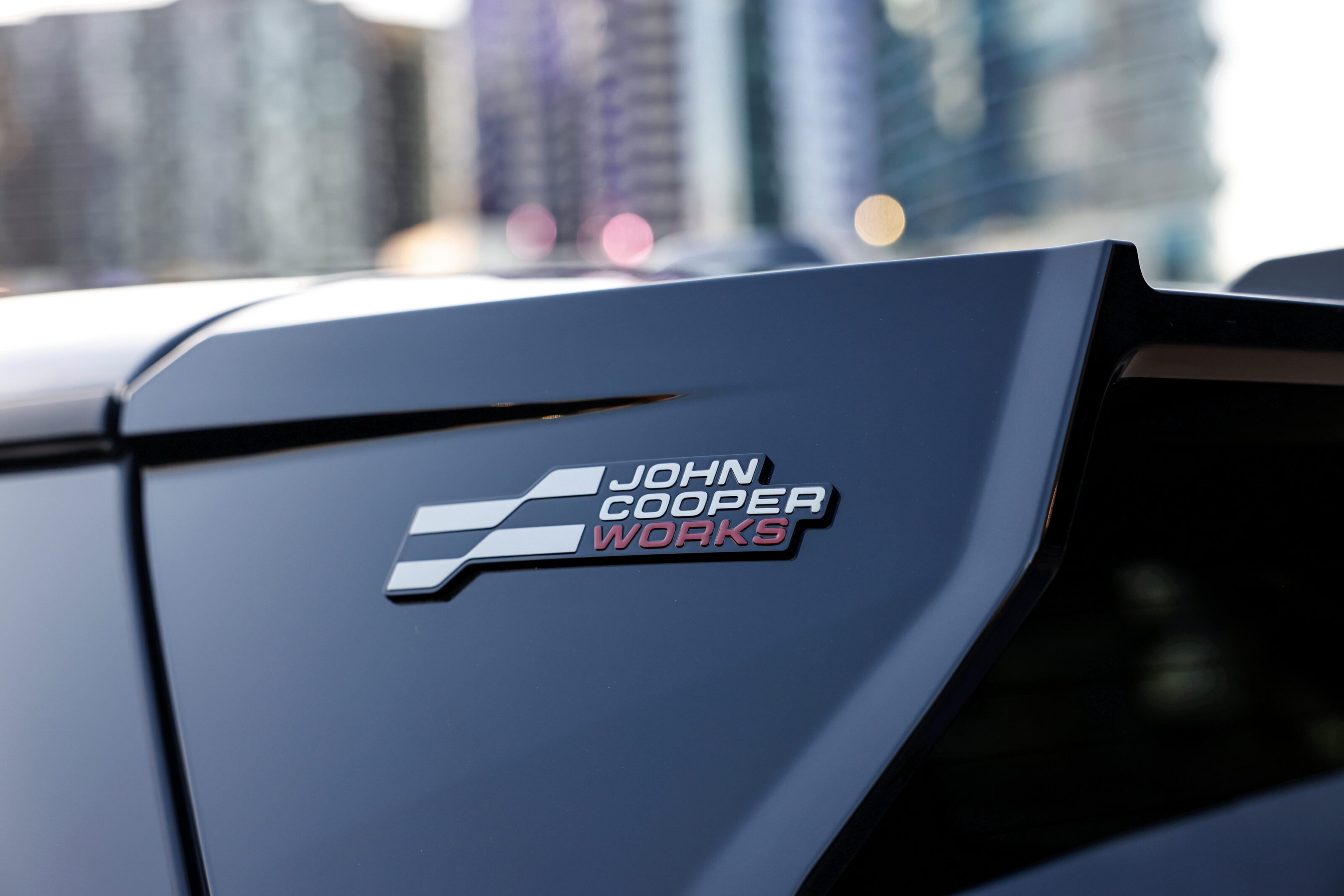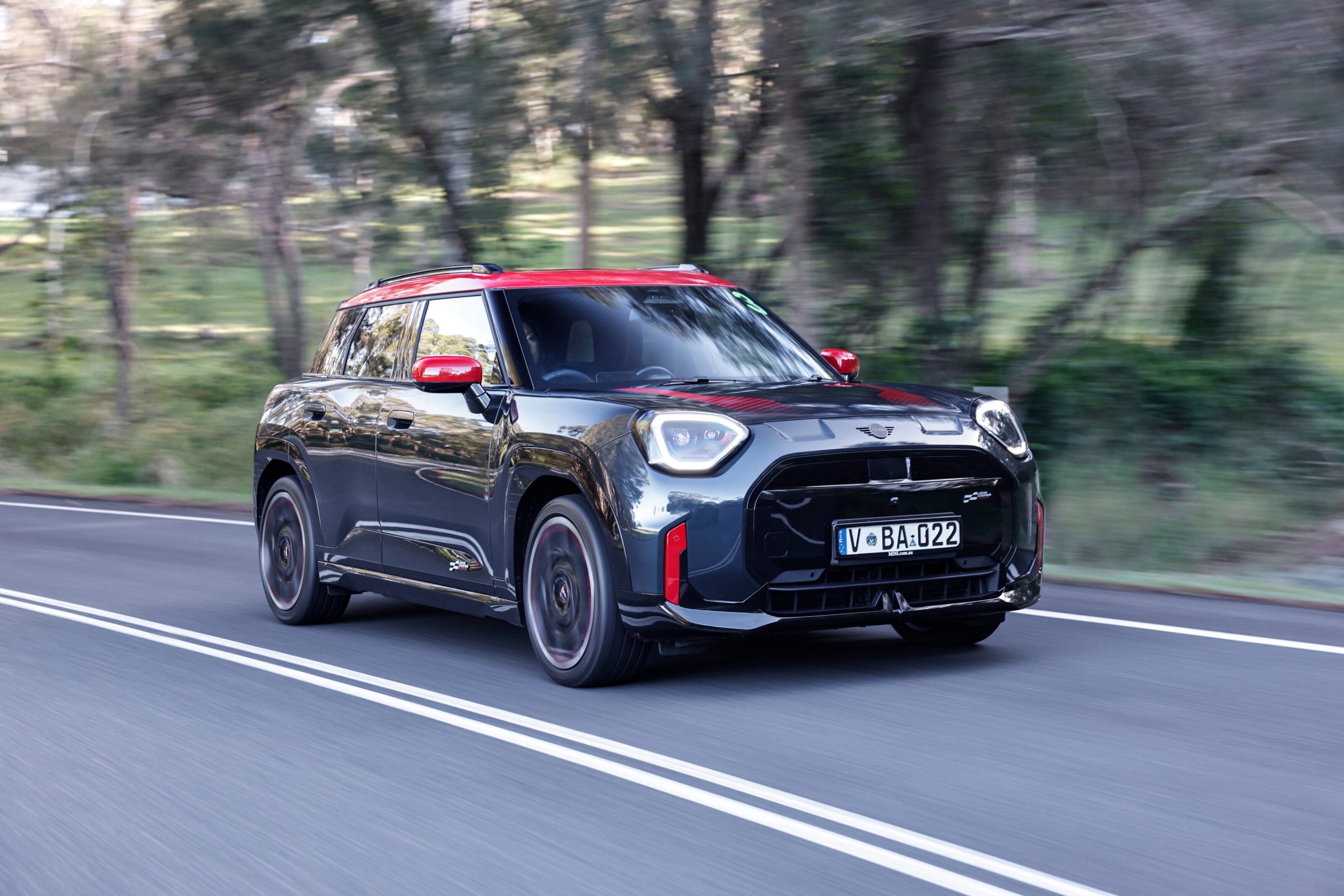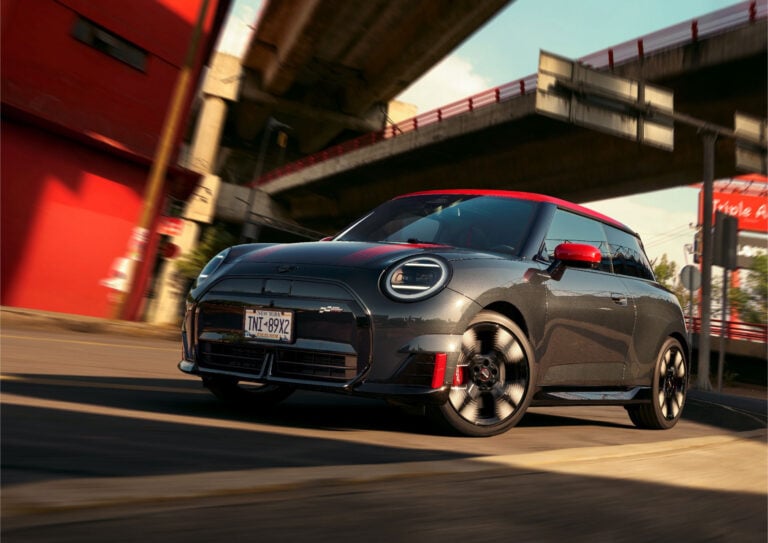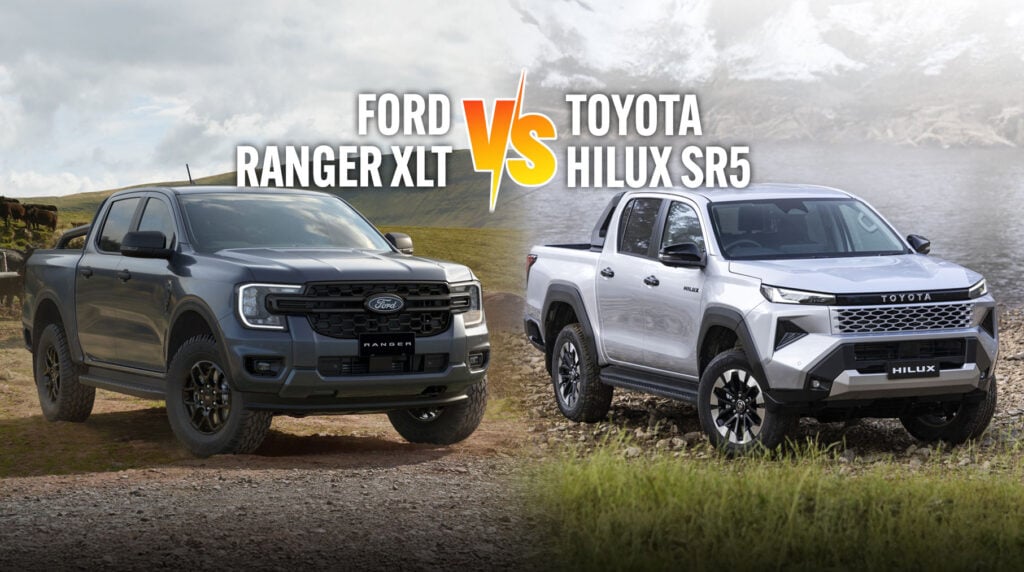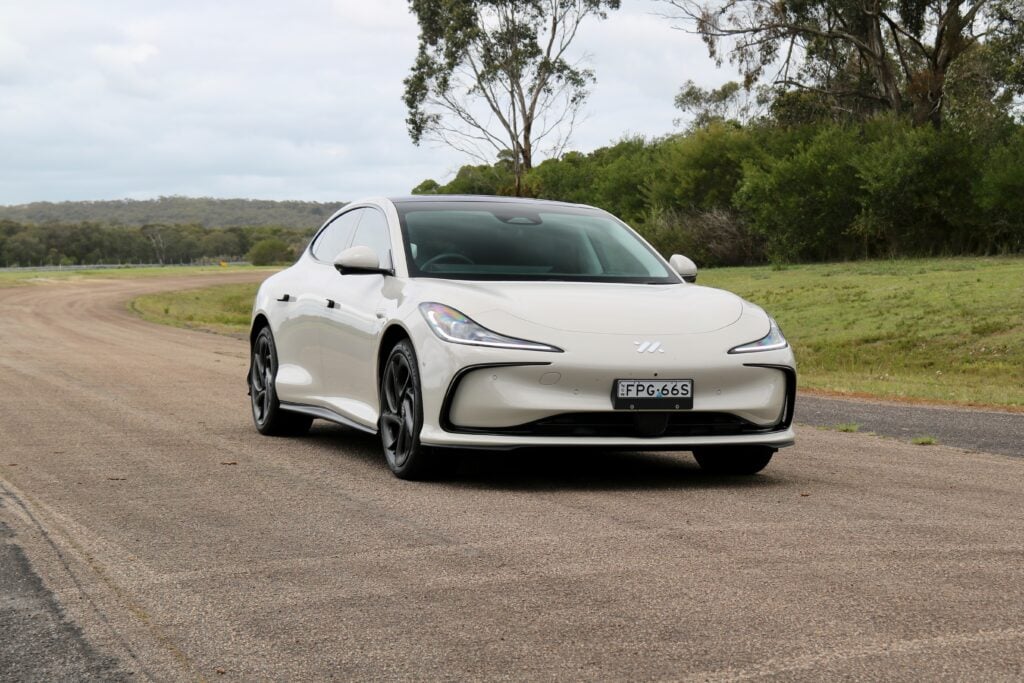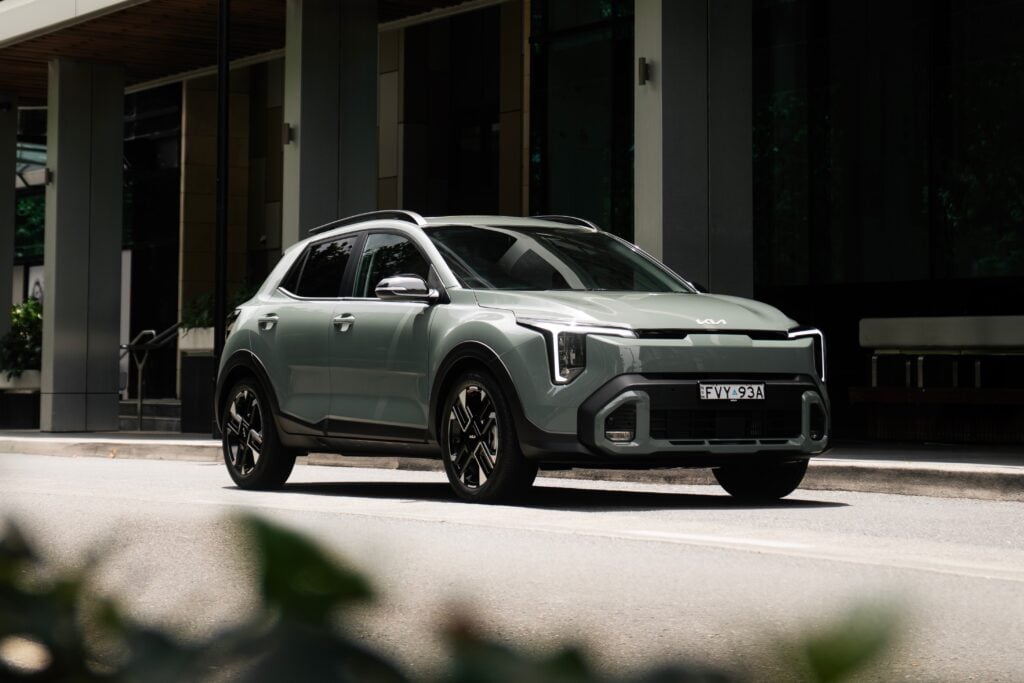The first electric Mini with a full-fat John Cooper Works performance package has arrived.
It’s part of a five-model JCW line-up for 2025 which covers the whole Mini range for the first time. That means the electric Cooper hatchback and Aceman wagon, the combustion-engined Mini Cooper as both a three-door hatch and convertible, as well as the family-focussed SUV-style Countryman. They have all been tweaked with a little more power and new suspension tuning.
The new JCW crew is not as extreme as earlier cars, cutting back on the pop-bang exhaust and some of the over-tight suspension, but signals a major milestone.
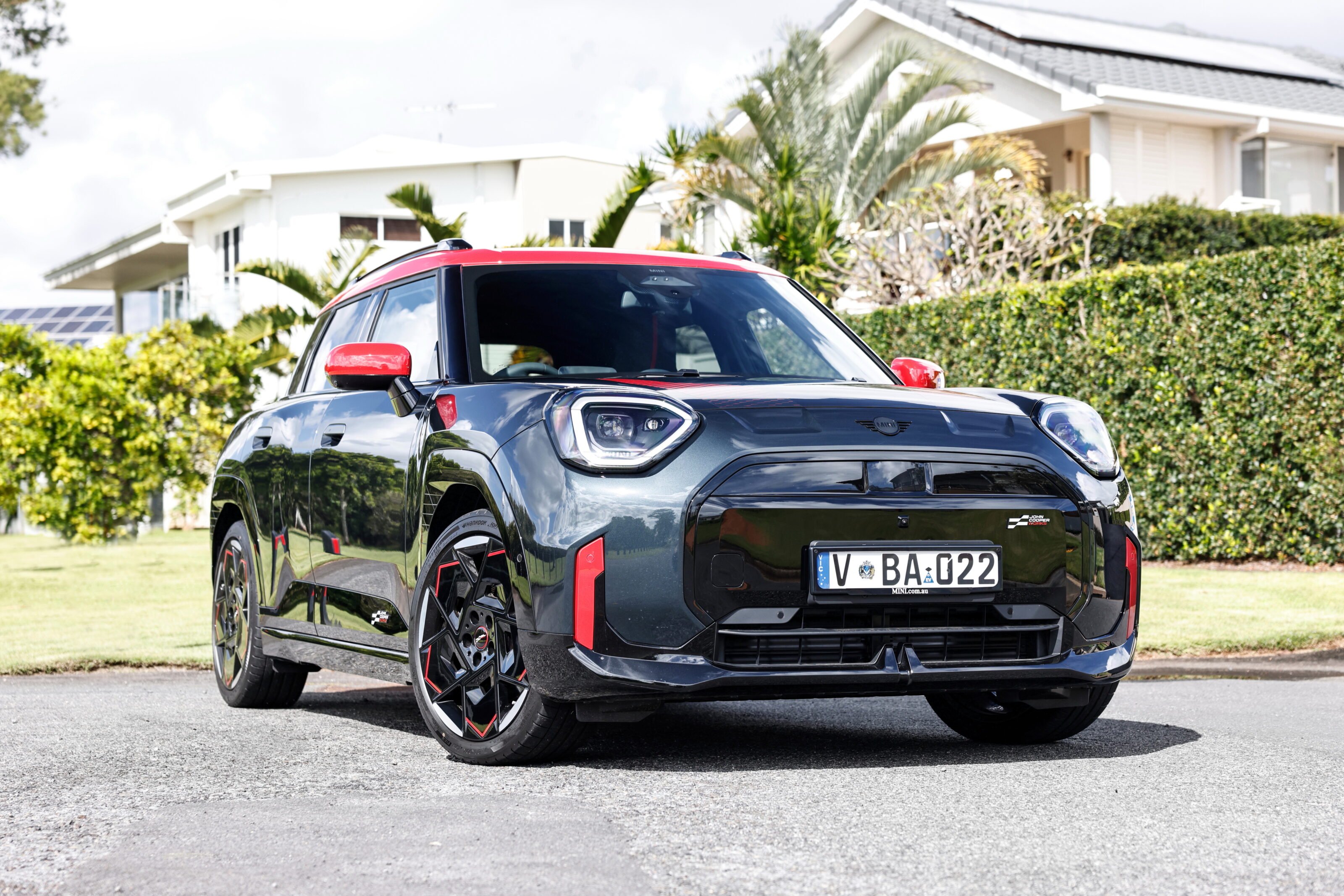
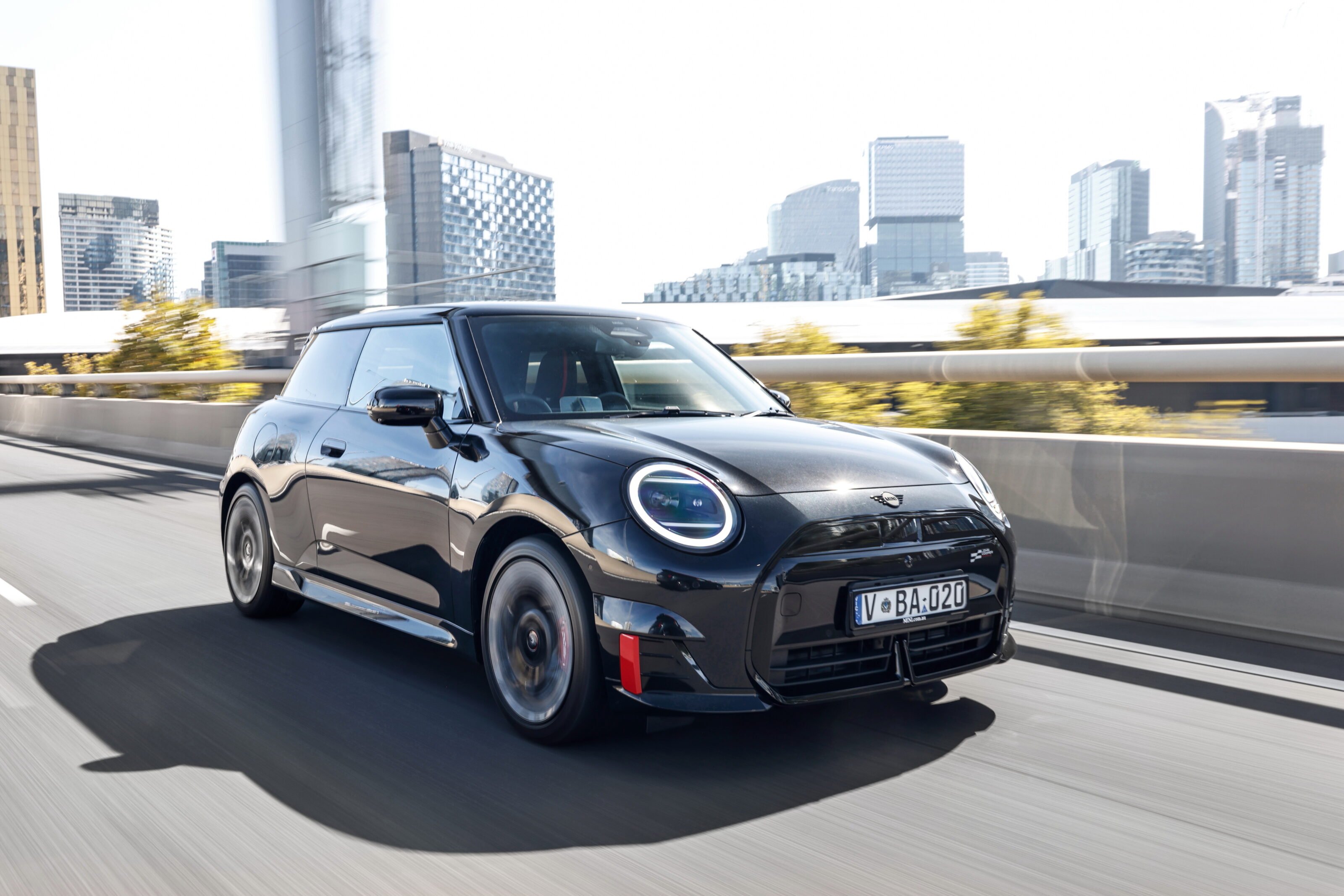
“This marks the completion of our new Mini family. This is the biggest investment we’ve ever done into the Mini brand,” says Alex Brockhoff, general manager of Mini in Australia.
Brockhoff talks a lot about the ‘go-kart feel’ of Mini in general and the ‘pinnacle go-karting’ of
the JCW models.
“Australians really like a fast car,” says Brockhoff, as he highlights a JCW showroom share which rivals Switzerland – and New Zealand – for global JCW leadership.
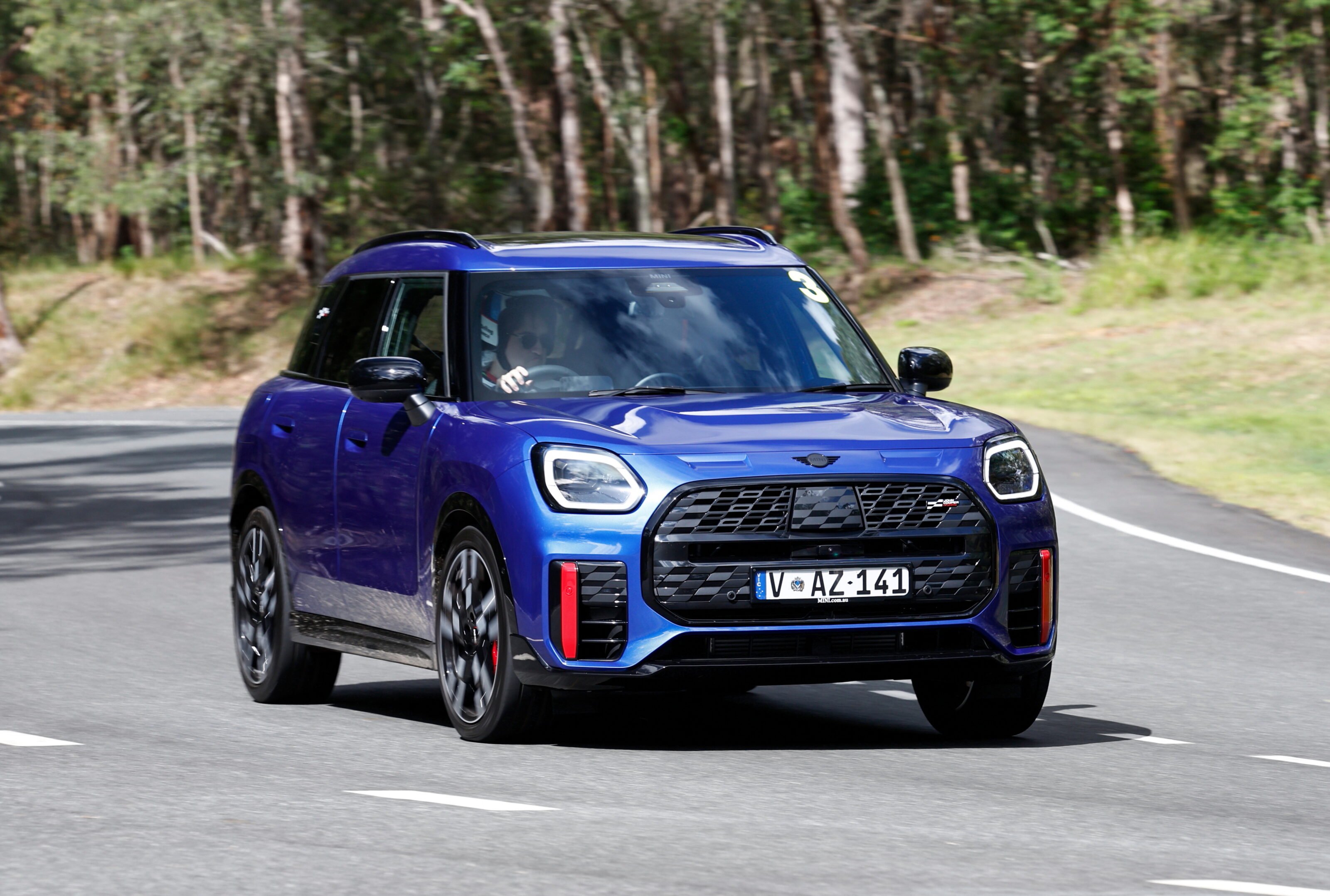
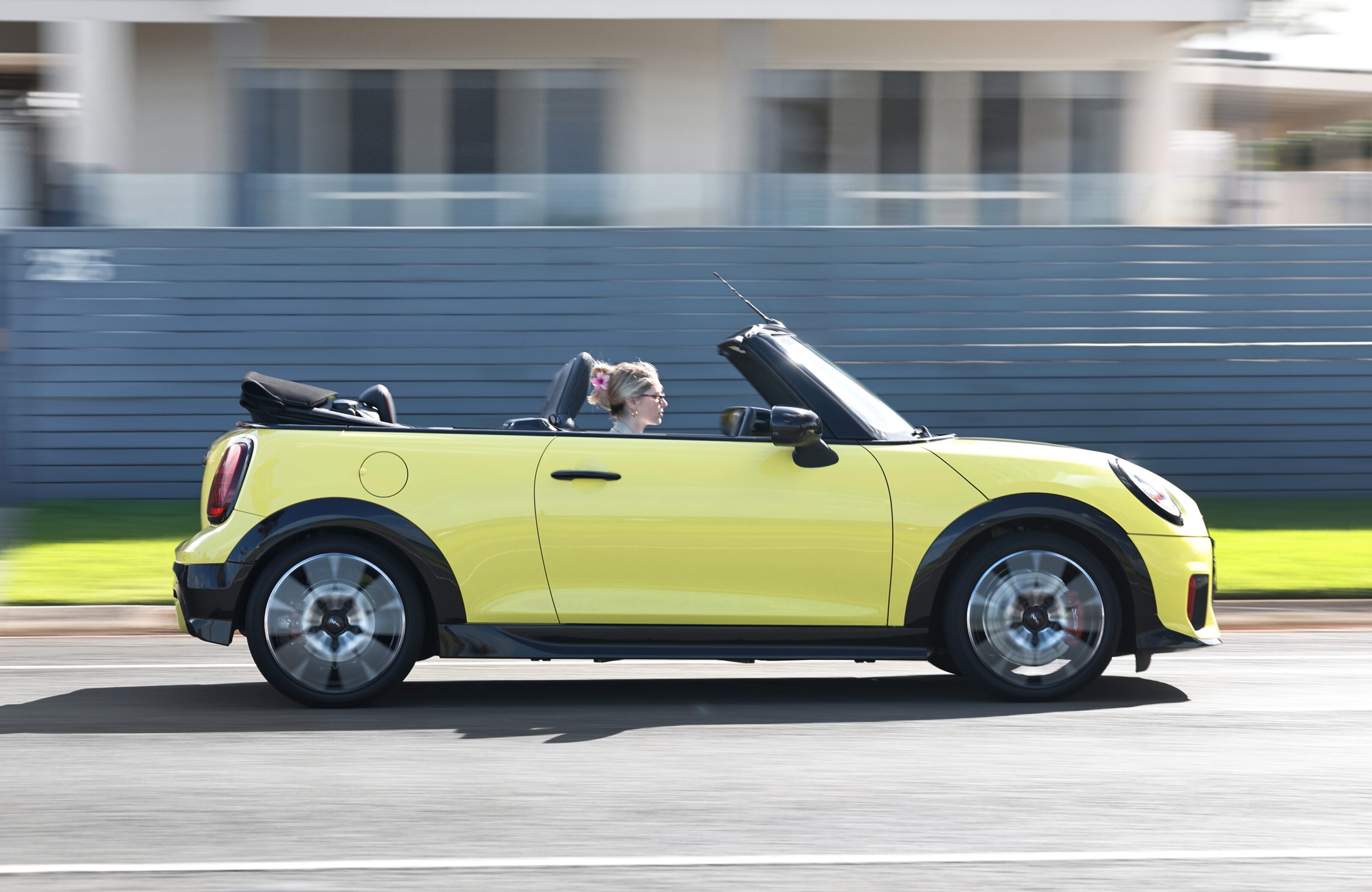
On the sales front, Mini deliveries through the first five months of 2025 have leapt ahead by 72 per cent, with just over one-third running on battery power.
It helps, naturally, that the cars are the completely new fourth-generation Mini models. The only shared BMW background is for Countryman, which sits on the platform of the BMW X1, while the electric models have a completely bespoke mechanical package and are made at a Chinese factory in a joint venture with GWM.
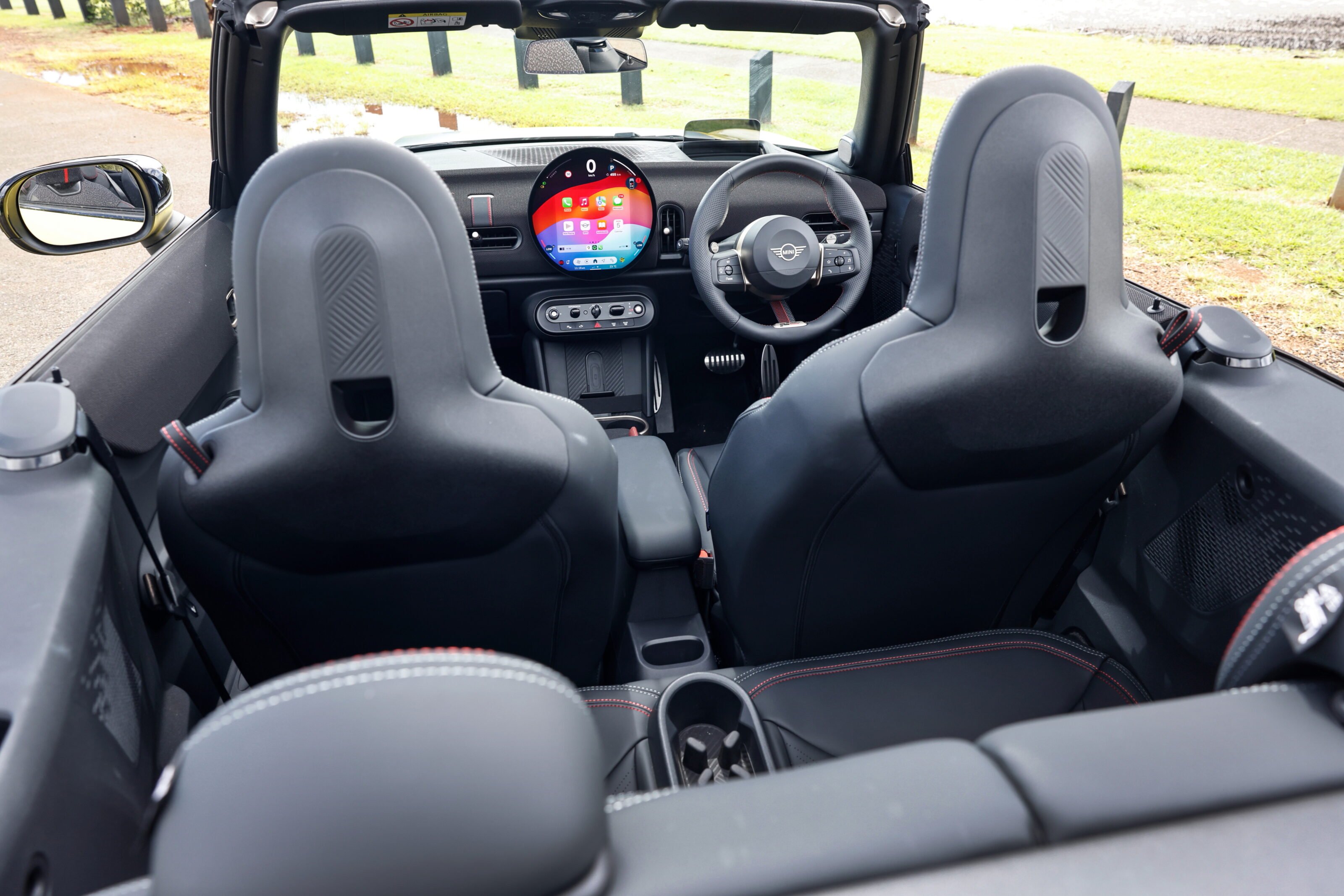
Pricing starts at $57,990 for the three-door petrol hatch and $63,990 for the all-electric JCW hero. There is conditioned-based servicing for all cars, with capped-price servicing available up to five years, and the electric models have an eight-year battery warranty in addition to the five-year coverage for the car.
It’s hard to get a serious feel for the 2025 models during a short day at the Mount Cotton driving centre in Queensland, with track laps behind a ‘pace car’ in the combustion cars and skidpad work including a motorkhana for the electric models. There was no chance for real-world driving.
The mechanical package for the combustion cars is familiar, with a JCW engine tweak up to 170kW and 380Nm good for a 6.1 second claim for 0-100km/h in the three-door hatch. All petrol cars have a seven-speed double-clutch gearbox with front-wheel drive.
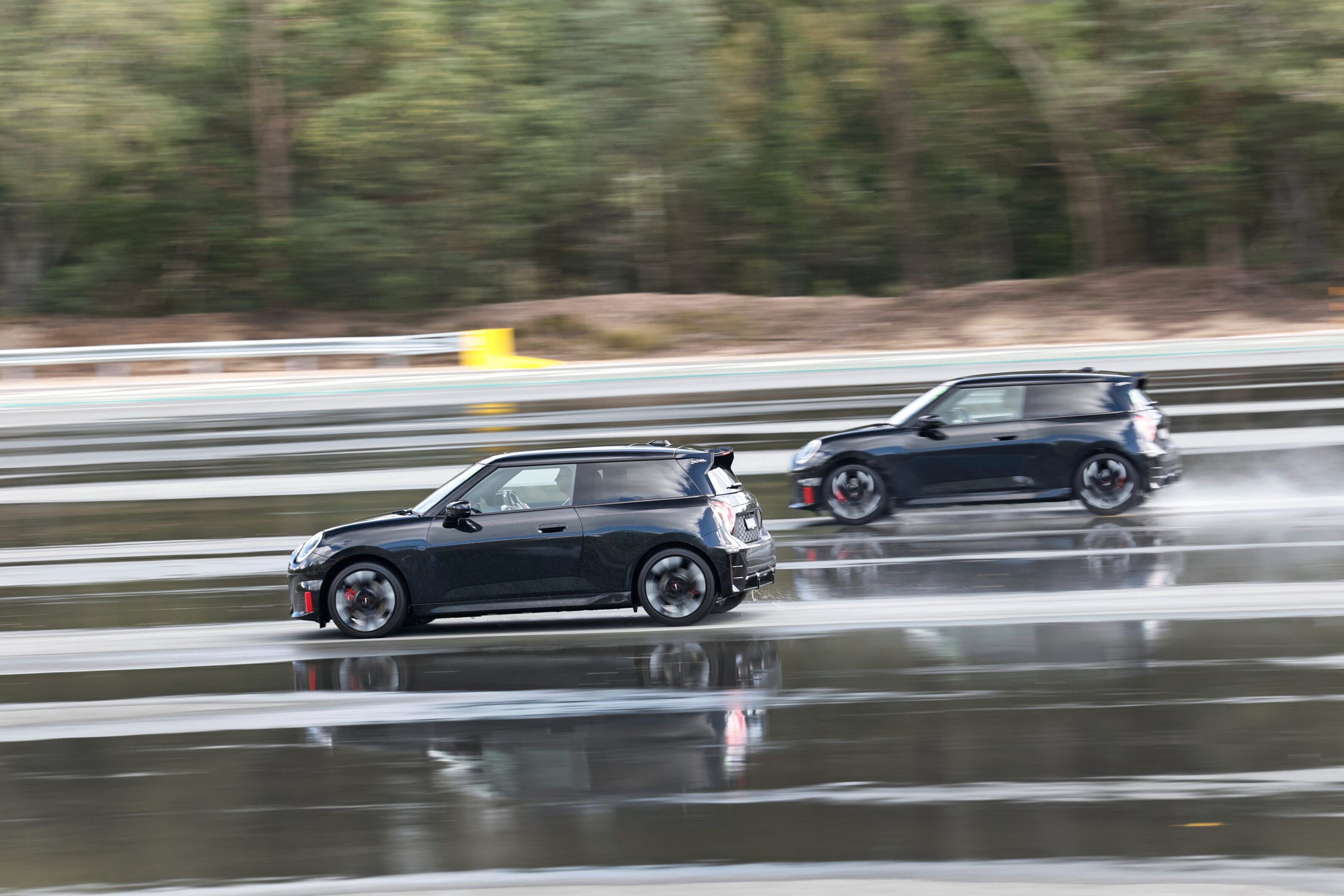
There is better yaw control after tweaking to the dynamic stability control and the Sport+ mode gives more freedom in controlled conditions.
Aesthetically, there are – of course – special 17 and 18-inch alloys, a JCW exterior ‘styling’ pack with sports stripes, with JCW seats, steering wheel, and anthracite roof liner in the cabin.
It’s all predictable stuff but the cars feel more ‘special’, not just in the Mini family but compared with so many other copycat cars in showrooms today. The fabric covering the dashboard and doors, combined with a JCW stripe on the fabric ‘third spoke’ for the steering wheel, is enough to help it stand out.
Then there are the electric cars.
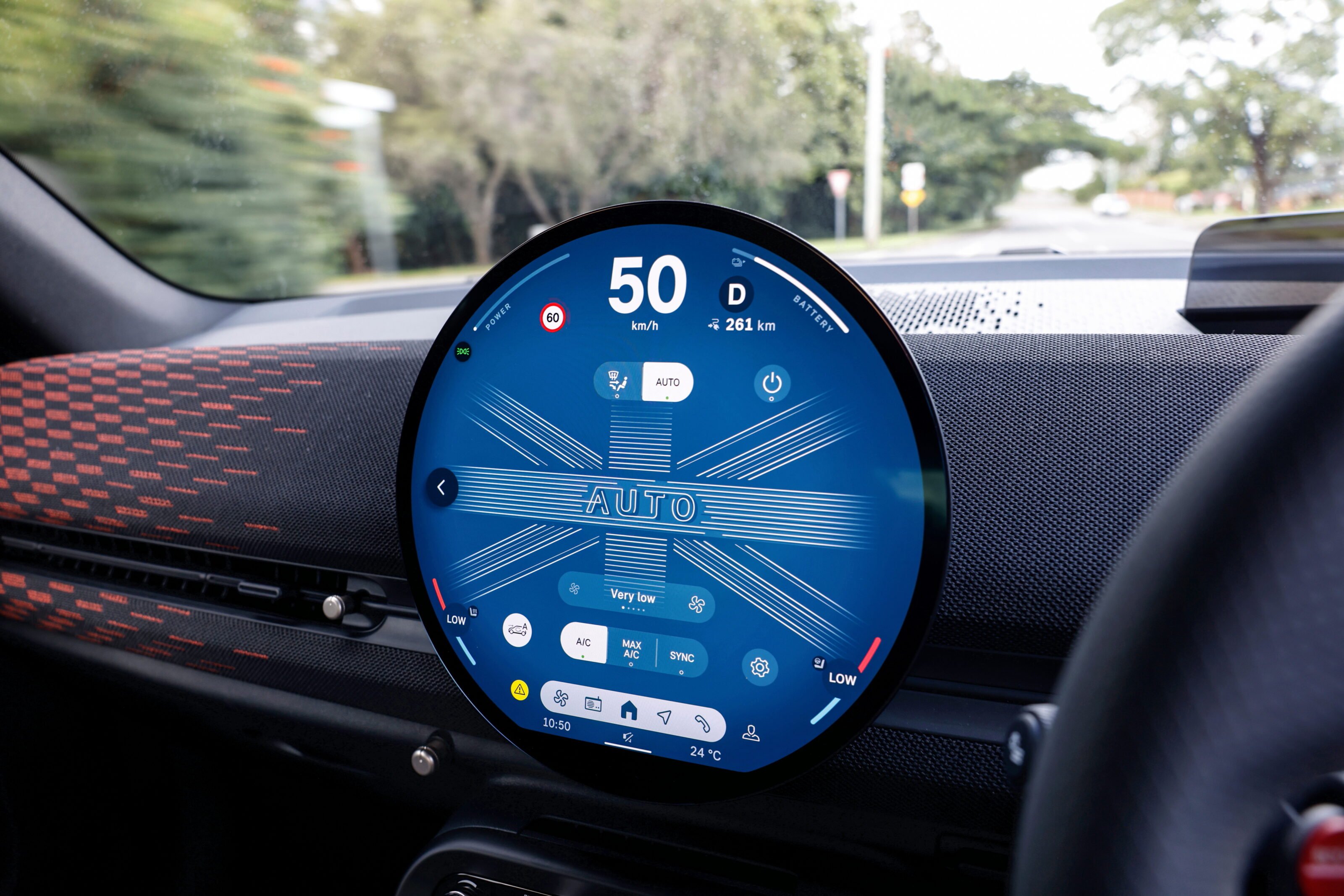
They average a $5000 hit on the bottom line for the combustion cars, which Brockhoff describes as a “manageable surcharge” before getting into the background.
“It’s the first time with Aceman. And the first time with electric JCWs,” Brockhoff tells Wheels.
“We are a more urban brand, where electrification makes perfect sense.”
Battery-powered Mini sales topped 30 per cent in the second half of 2024 and are now at 36 per cent.
Mechanically, the JWC electrics take a hit of around 300 kilograms for the 54.2kWh battery, with range claimed at 371 kilometres for the Cooper and 355 for the larger and heavier five-door Aceman in WLTP conditions. The electric motor provides 190kW and 350 Nm and, with front-wheel drive, the hatch has a claimed 0-100km/h time of 5.9-seconds with 6.4 for the Aceman.
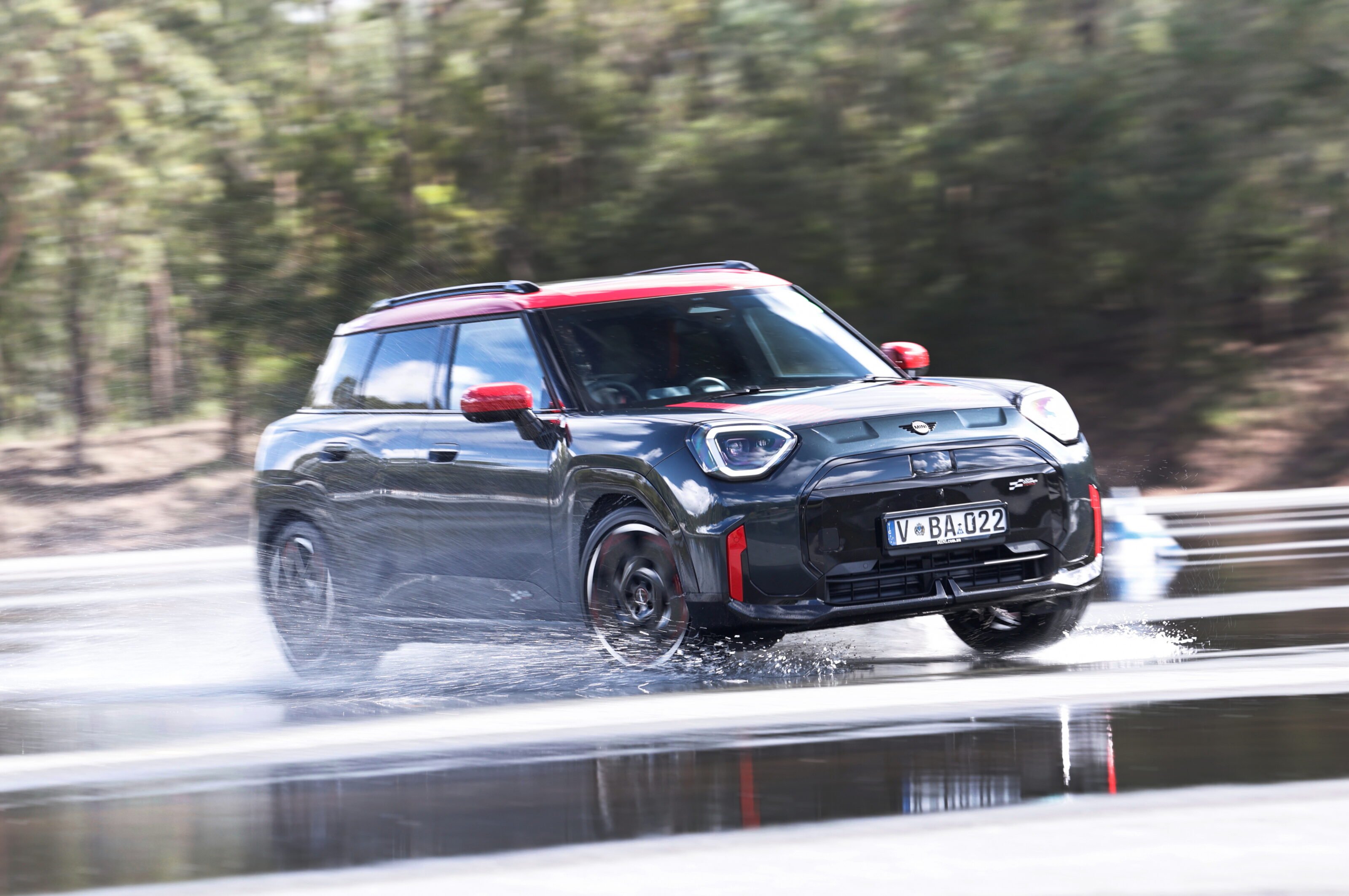
So it’s quicker in the sprint than the ICE cars and also gets something not available with petrol power – launch control.
The cabin of the electric cars is shared with the other JCW models, although the driving feel is different. The acceleration is more linear, as you would expect, but the electric Mini feels both more and less like a go-kart. Having the battery slung low means it changes direction very swiftly, and the extra heft helps to keep it planted, but you cannot fight against the weight of the battery.
Away from the skidpad onto a road with proper corners, the JCW electric turns well but is prone to pushing straight ahead if you go a bit too quickly. The ride is not as compliant as the petrol models. The larger Aceman is practical but, for sporty driving, lacks the driving finesse in the three-door hatch.
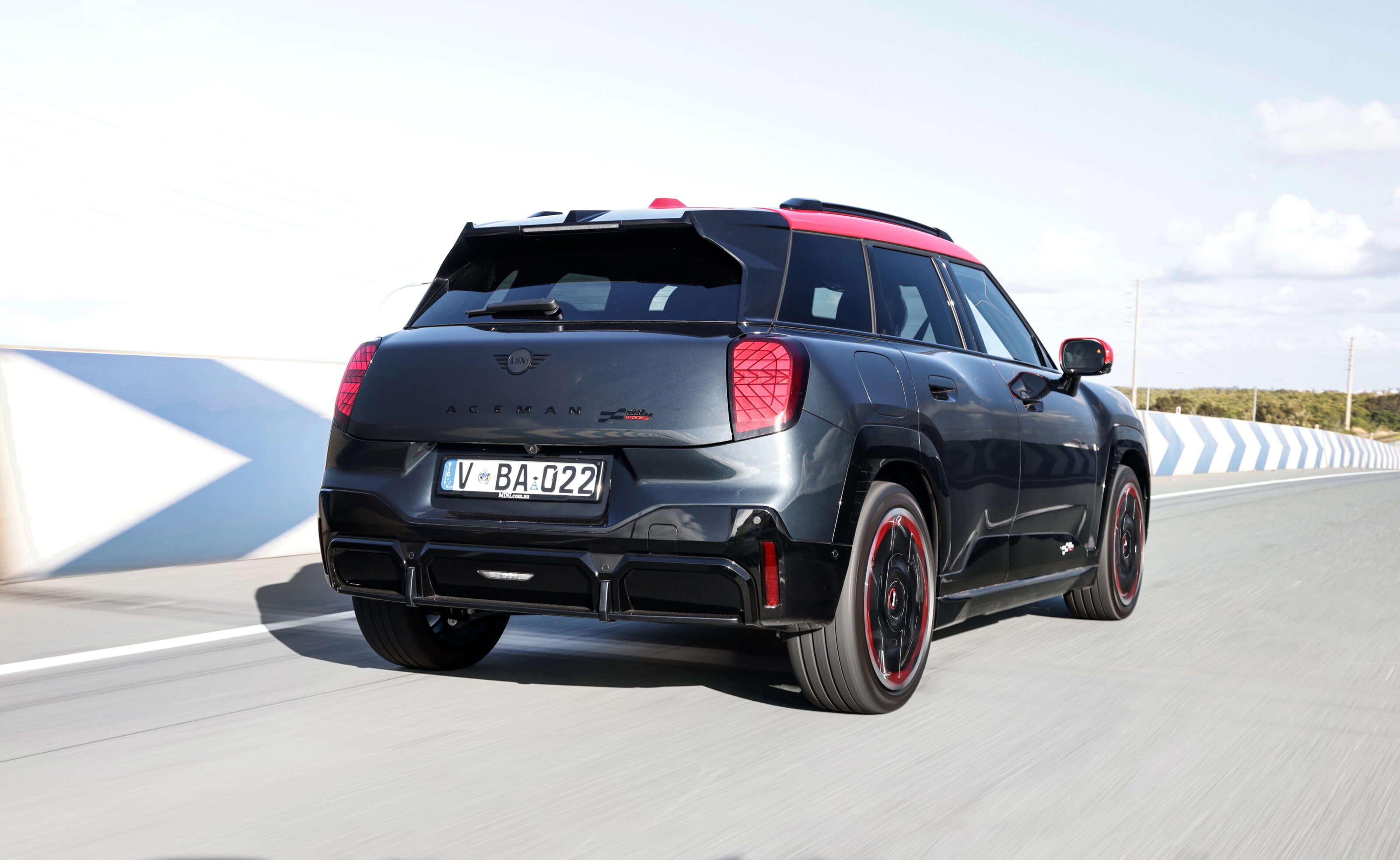
Specifications
| Price | From $63,990 (3-door hatch) and $65,990 (Aceman) |
|---|---|
| Drivetrain | Single electric motor, front-wheel drive |
| Motor output | 108kW/182Nm |
| Electric motor outputs | 190kW/350Nm |
| Battery | 54.2 kWh |
| Transmission | Single speed, front-wheel drive |
| Range | 271km (WLTP claimed) |
| 0-100km/h | 5.9 seconds (claimed) |
| Warranty | 5-year/unlimited km, 8 year battery |
